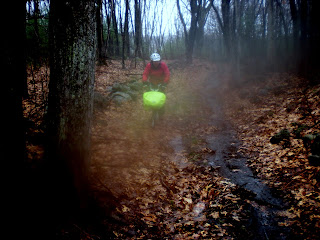Raleigh made a good start in lightweights in the 1930s, with the RRA, the Silver Record, and the Charles Holland models. However, as with the other large manufacturers, it was too little, too late. Small builders such as Selbach, Carpenter, Granby, Evans, and Maclean - there were many others - beat the big concerns to the punch by more than a decade. In the early 1920s Kuklos (Fitzwater Wray) berated the large manufacturers for making heavy bikes to outdated designs, better suited to 19th Century roads than those of the day. Meanwhile small makers adopted lightweight butted tubing, low brackets, 26-inch wheels, and fully brazed stays. These are the machines depicted in most of Patterson's drawings.
The French manufacturer Bastide is credited with introducing the new lightweight design circa 1912, albeit using Reynolds high-manganese tubing and BSA fittings, which in the period should be taken to mean lugs, bracket shell, bearing cups, and cranks. Therefore it is interesting that Kuklos reports then-current CTC Secretary, G.H. Stancer, having had such a bike (26-inch wheels, low bracket) custom-made for him by one of the large manufacturers around 1903. Kuklos is quite definite about his dates, which he offers as evidence supporting his indictment of the leading manufacturers for not taking up the design for their regular products in the intervening twenty years. Does anyone have a photo of Stancer on this machine?
Nonetheless Raleigh produced some elegant bicycles before the outbreak of war in 1939. The fishtail lugs - outdated on their post-war RRA and Lenton Sports - were not out of line with the efforts of the small makers in the 1930s. The first fancy lugs appeared (Hobbs and Hetchins, for example) toward the end of the decade. To judge by its saddle the bike in the ad may not be at Raleigh's top-end, but it is indicative of their lightweights' geometry and fittings at the time.
The example in the photograph below was ridden for decades over the roads of southeastern Massachusetts by Richard Cody, who toured England by bike in the early 1930s and brought one home. After his death in 2005, a New England Section member was able to acquire and preserve the machine. It was not unusual in the 1920s and '30s for seat tubes to be on the short side relative to top tubes, just as the fashion is today, but long stems to make up for lost altitude were in common use.






















